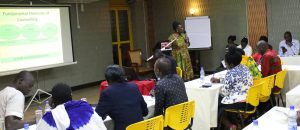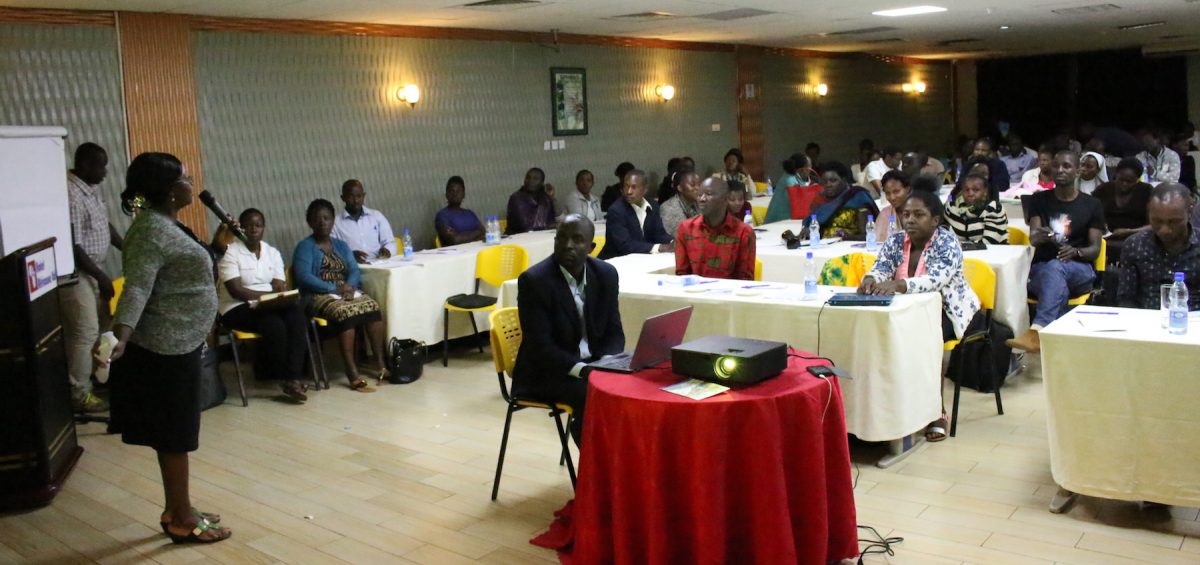Nine (9) districts are currently implementing a Viral Load (VL) Quality Improvement (QI) collaborative that is aimed at improving uptake of VL monitoring for HIV infected individuals on ART. A total of 39 health facilities across these 9 districts, with the lowest VL coverage, have instituted low cost changes/methods for improving uptake of VL monitoring. These changes are routinely measured and evaluated to establish the most effective intervention for improving VL uptake. METs, MOH, District Health Teams, CDC supported IPs including Baylor Uganda, MildMay Uganda, TASO Uganda and Rakai Health Sciences Program are supporting the health facilities in the implementation of the QI collaborative project that will be completed by end December 2018.
METS organized a Viral Load Quality Improvement Collaborative Session. This learning session provided a platform for the health facility QI teams to share successful practices in VL monitoring and worked collaboratively to scale up evidence-based practices. The learning session included skills building sessions, sharing of the health facility QI projects, development of story boards and development of a draft change package.
Case in point was Jane Kisiitu’s presentation on Intensive Adherence Counselling (IAC) for Virally Non-suppressing clients. She noted that medical workers had a fear of counselling when it came to counselling and this had created pressure to the MoH to hire professional counsellors. MoH however opted to give guidelines to Health workers on ethics and principles to give guidance towards counselling to allow the client to solve their problems. IAC reduces chances of failed treatment and this involves peer educators, expert clients, linkage facilitators, social support groups clinicians and health workers with IAC focal persons and these were to continue being trained.

Jane Kisiitu making her remarks
Main themes of the VL QI projects include; increase in uptake of VL in the general clinic and mother baby care point and use of VL results and improved management of the non-suppressed clients.
The learning session was officially opened by Ministry of Health’s Dr. Herbert Kadama who noted that Uganda was aligned to the international strategies and MoH was striving to put an end to HIV by 2030. “Viral load suppression addresses the last 90-90-90 strategy in a way that through VL suppression quality of life is improved, new infections are reduced and PLHIV have a healthier and more productive life which in turn contributes to the national development goal of steering Uganda towards middle Income Country” he said. He emphasized the need for spreading the VL collaborative beyond the CDC supported districts especially those that were performing poorly in that regard.

“There are challenges on retention and people newly diagnosed as reported by FY18 Q2 performance, which can also be addressed through similar QI initiatives,” Daniel Bogere
Dr. Daniel Bogere from CDC re-echoed the need for sharing of preliminary results of the QI projects. “These will inform National level strategies for improvement in Viral suppression rates considering Uganda is among the least performing countries in regard to the third 90,” he noted. He further emphasized the need for increased effort and mentorship aimed at addressing the low performance by the IPs for facilities in districts that were continuously declining in performance
The participants in the session took home some key learning sessions among them; the need for increased team work during implementation of QI projects, the value of understading the client dynamics and the need to engage community structures like the VHTs, expert clients QI communities and health workers



